文章
Colour_
2017年07月17日
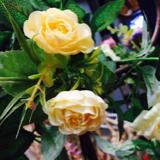

玫瑰花的养殖方法
1、温度:喜温暧,生长的最适宜温度为15~25,在5°C以下的低温时生长不良或停止生长。能耐寒,冬季能忍耐-10的低温,长江流域能露地越冬。不甚耐高温,在38以上的温度时,植物生长不良或停止生长。
2、光照:喜阳光,光照不足时植株生长瘦弱,开花少且香味淡。盛夏时,应遮去中午前后的强烈阳光。
3、浇水:耐干旱,但盆栽植株在生长期间要保持盆土湿润,才能保证植株的正常生长与开花,过于干旱时不易开花。不耐水湿,盆土过湿或积水,易引起植株的烂根。开花前后要控制浇水量;越冬落叶休眠时对水分的需求较少,更应控制浇水,不让盆土过湿。但如遇强冷空气侵袭时,应及时浇水,保持盆土湿润,可有利于保暖防冻。
4、环境湿度:4~5月孕蕾时,应在每天傍晚向植株喷水,以利于花蕾的膨大和开放。
5、施肥:喜肥,过于贫瘠时不易开花。盆栽植株生长期间每10天需追施1次肥料,前期的施肥应以氮为主;孕蕾时要增施磷肥,忌单纯施用氮肥;开花期停止施肥。地栽植株落叶后要施足基肥,翌年早春再施1次氮肥,以促发新枝并使枝条生长健壮。
6、修剪:因花开于当年萌发的新枝上,因此应在萌芽前进行一次修剪。除将老弱枝、枯枝、过密枝疏剪外,还要对留下的枝条进行强剪。每盆只需保留3~4根枝干,每根留5~8厘米重剪,以促其萌生粗壮的新枝。生长期除在植株过于繁茂时进行适当疏剪外,一般不作修剪。开花期应及时摘去残花,可利于以后的开花I如果不摘,一年只能开花1次I若进行摘花,可使植株多次开花。萌蘖力极强,根的寿命可达20年左右,但老株超过10年多不开花,故5~7年需进行一次更新。
7、翻盆:每年春天珲行一次翻盆。喜肥沃、排水良好的砂质壤土,在微碱性土壤中也能生长。基质可用园土、腐叶土、粗砂或珍珠岩等材料配制。
病虫害防治:有白粉病、锈病和介壳虫、蚜虫、月季茎蜂、红蜘蛛等病虫危害。患锈病时,叶片出现淡黄色病斑,叶背生有黄色粉状物,并逐渐枯死。
8、常见问题及其原因:植株枝干细瘦,开花少且香味不浓常为光照不足所致
①光照不足;②盆土过于干燥;⑤盆土过于贫瘠;④没有修剪,开花后没有摘去残花;⑤长期没有翻盆。
叶片出现病斑,并逐渐枯死是患锈病的缘故
9、观赏及保健作用:玫瑰为香花观赏植物,在园林中宜作花篱、花境、花坛,也可盆栽装饰窗台、庭院等处。
玫瑰的气味能杀灭结核杆菌、肺炎球菌、葡萄球菌等;其香味能宽胸活血,可防冠心病,并可让急躁的心情变得温和、宁静,令人身心爽朗快乐;对空气中的二氧化硫也有一定的吸收能力。

2
8
文章
Colour_
2017年07月17日


金桂花的养殖方法
1、湿度:据了解,金桂在7月份的平均气温在24-28℃,最适宜金桂生长的气温在15-28℃。湿度对于金桂来讲非常重要,尤其是在金桂是幼龄期和常年树开花时期,对水分的吸收较多,若经常干旱会严重影响金桂的正常开花。
2、光照:金桂花卉喜温暖,其抗逆性较强,既耐高温,也较耐寒。金桂较喜阳光,但应避免强日照和荫蔽,对其生长不利,花卉每天应需要6-8个小时的来吸收光合作用。在全光照下其金桂的枝叶能够生长茂盛,开花集锦;而在荫蔽的环境条件下,金桂生长枝叶稀疏、花稀少。
3、生长环境:金桂适宜种植在土层深厚、疏松肥沃、排水性较好的砂质土壤环境中,更有利于金桂花卉的生长。金桂若种植在室内应加强室内通风,使得金桂看起来更加美观。
4、浇水施肥:金桂在栽植前,应在其树穴内掺入草本灰及有机肥料,同时在栽植后浇一次透水。为了能够使金桂新枝长出前,保持土壤湿润,切记不可浇肥水。金桂一般在春季施用一次氮肥,夏季施用一次磷肥、钾肥,使得金桂花繁叶茂。金桂花卉在入冬前施用一次有机肥,以腐熟的饼肥、厩肥为主。忌浓肥,尤其忌入粪尿。同时加强室内的通风,在冬季尽量少浇水。

金桂花的养殖注意事项
1).浇水:桂花盆土要掌握不干不浇,浇则浇透的原则,但要每天向叶面喷洒一次清水,均匀喷湿所有的枝叶,以开始有水珠往下滴为宜,以保持叶片湿润,并清洗去吸附在叶片上的灰尘。清明节后将桂花移置露天,浇一次透水。夏季须在早晚浇水,冬季则在中午前后浇水,使水温与土温接近,不致骤冷骤热,注意不可积水。冬季保持盆土湿润即可。
2).施肥:桂花以观花为主,应供给充分的肥料。抽梢时,可施1~2次氮肥,促进枝叶生长;花芽分化和开花前,则以施磷肥为主。春季将桂花移置露天后,开始浇腐熟稀薄的豆饼.麻酱.鱼腥水等,每半月一次,5月底至开花前每周浇一次,肥水浓度逐渐增加,7~8月每隔半月追施一次0.5%磷酸二氢钾溶液。花后追施一次清淡的肥液,以免引发秋枝。在冬季要多施有机肥和磷钾肥,一般每15—20天根部施一次沤制腐熟并己除臭的饼肥25—30克,磷酸二氢钾10—15克,兑清水2一3分斤后淋施,并每10—15天叶面喷一次1000倍核苷酸。600倍高效生物磷钾肥混合液,均匀喷湿所有的枝叶,以开始滴水为宜。施肥前,盆土要稍干些,并宜先松下土,以便肥料的吸收。施肥的第二天应浇一次水。如用堆肥或厩肥,一定要完全腐熟后才能使用(其标志是肥汁发黑)。应用化肥过磷酸钙,其浓度不能超过2%,尿素浓度是0.5-1.0%。
3).倒盆:盆栽桂花每2--3年要倒盆换土一次。剪去一部分老根和枯根,用竹签剔去一部分旧土。上盆前在盆底垫上一层河沙或蛭石,以利通气排水,并在盆底放置腐熟饼肥为基肥,填土一定要压实,这样可促进桂花花繁叶茂。盆栽挂花的用土配比不很严格,通常可用园土、堆厩肥和河砂各占l/3配制而成。如酸性过高,可添加一些石灰粉或草木灰;碱性过重,则可加入一些硫酸铝或硫酸亚铁等。春季,盆栽桂花种好后,要浇足透水,然后移至庇荫处约10天,使 其"服盆"。服盆期间,不能施肥。在恢复生长并长出新叶后,方可浇水和施肥。花盆的质地以紫砂陶盆或釉陶盆为佳,色泽以紫色或赭色较好,可与花、叶色彩有鲜明对比,增加其观赏效果。
4).修剪整形:桂花造型以做成曲干式、斜干式或飘逸式者为佳。树势斜展,枝叶密茂,古朴自然,最耐欣赏。开花时,浓香四溢,沁人心脾。桂花整形一般采取攀扎与修剪相结合的方法,主干可攀扎成曲干形或斜干式。桂花的整形修剪宜在秋后进行,对生长很高而下部枝条很空,树形很差的植株,可在2/3或3/4处将整个顶部的枝条剪去,对"头重脚轻"的植株要剪去上部过密枝条,只留下部较小枝条,对枝条过密的植株,要进行疏剪。花后还应进行一次整枝,剪去徒长枝、枯枝、病虫枝、密生瘦弱枝。
5).越冬:室温宜保持O-5℃,相对湿度保持50-80%。冬季冷室内光照要好,尤其是早春芽开始萌动前,更要求阳光充足。次年春季,华北地区谷雨后(黄淮流域在惊蛰前后),安排盆栽桂花出室。出室后,先集中放置在室外背风向阳处,以后再散放成排,使其逐渐适应外界环境。
6).病虫害防治:桂花常见的病害有叶斑病、煤污病、藻斑病、根腐病、缺铁病等,应针对病害情况,予以防治。叶斑病、煤污病及藻斑病可喷射0.5波尔多液或5%多菌灵500~1000倍液防治;根腐病的防治,应注意保持土壤疏松透气,不要积水;如因真菌引起根腐时,可用代森铵200~300倍液浇灌根部。桂花常见的虫害有叶蜂、粉虱、螨、长白蚧、黄刺蛾等。叶蜂、粉虱、螨可用40%乐果1500~3000倍液喷杀,长白蚧除人工刷除外,在第一二代若虫时,可用40%氧化乐果1000倍液或40%杀螟松500倍液喷杀。
2
4
文章
Miss Chen
2017年07月17日


Nombre científico o latino: Abelia chinensis 'Edward Goucher'
Nombre común o vulgar: Abelia.
Familia: Caprifoliaceae.
Altura y Diámetro : 1 x 2 m.
Color de la flor: rosa.
Floración: verano.
Follaje caduco.
Hoja: Semiperenne.
Situación: sol o media sombra.
Crece en suelos fértiles, bien drenados.
Protegido del viento frío.
En primavera, elimine las partes muertas o dañadas y, después de la floración, corte algunas de las ramas más viejas al ras del suelo para favorecer de nuevo el crecimiento.
Multiplicación: por esquejes y acodo.

0
0
文章
Dummer. ゛☀
2017年07月17日

Family - Polygalaceae
Stems - Multiple from a thickened taproot and fibrous roots, erect, herbaceous, to +45cm tall, branching in upper 1/2, often purplish base, puberulent above, glabrescent at base, terete.
Leaves - Alternate, petiolate. Petioles to 2-3mm long, puberulent below. Blades acuminate, tapering at base, elliptic, deep green above, lighter green below, with serrulate margins, mostly glabrous but with a very few sparse puberulent hairs, to 7cm long, +2.5cm broad, leaves often larger near the apex of the plant.
Inflorescence - Terminal and lateral indeterminate racemes to +/-5cm tall (long). Axis puberulent.
Flowers - Petals 3, united into a whitish glabrous tube, lacerate at apex. Stamens 8, adnate with corolla tube, in two rows. Anthers yellow, .2mm long. Ovary superior, green, glabrous, orbicular, .7mm in diameter. Style green, -1mm long, green, glabrous, with a few floccose hairs at apex, clavate. Stigma lateral, small. Calyx accrescent. Sepals 5. Lateral sepals colored as the petals and spreading, to +3mm long, 2.1mm broad, glabrous, with ciliolate margins. Lower two sepals and single upper sepal small, greenish-white, acute, puberulent. Lower two to .3mm long. The basal sepal to 1.5mm long. Fruit a capsule, glabrous to sparse pubescent, to 5mm in diameter, slightly compressed.
Flowering - May - July.
Habitat - Rocky woods, open ground, prairies, gravel bars, stream banks.
Origin - Native to U.S.
Other info. - This small species can be found in a couple different areas of Missouri. It is more prevalent in the Ozark region but can also be found in a few counties in the north-central portion of the state. This is a striking little plant and should be cultivated more.
Steyermark lists two varieties based on leaf shape and sepal size but I won't go into those here.
Stems - Multiple from a thickened taproot and fibrous roots, erect, herbaceous, to +45cm tall, branching in upper 1/2, often purplish base, puberulent above, glabrescent at base, terete.

Leaves - Alternate, petiolate. Petioles to 2-3mm long, puberulent below. Blades acuminate, tapering at base, elliptic, deep green above, lighter green below, with serrulate margins, mostly glabrous but with a very few sparse puberulent hairs, to 7cm long, +2.5cm broad, leaves often larger near the apex of the plant.

Inflorescence - Terminal and lateral indeterminate racemes to +/-5cm tall (long). Axis puberulent.
Flowers - Petals 3, united into a whitish glabrous tube, lacerate at apex. Stamens 8, adnate with corolla tube, in two rows. Anthers yellow, .2mm long. Ovary superior, green, glabrous, orbicular, .7mm in diameter. Style green, -1mm long, green, glabrous, with a few floccose hairs at apex, clavate. Stigma lateral, small. Calyx accrescent. Sepals 5. Lateral sepals colored as the petals and spreading, to +3mm long, 2.1mm broad, glabrous, with ciliolate margins. Lower two sepals and single upper sepal small, greenish-white, acute, puberulent. Lower two to .3mm long. The basal sepal to 1.5mm long. Fruit a capsule, glabrous to sparse pubescent, to 5mm in diameter, slightly compressed.

Flowering - May - July.
Habitat - Rocky woods, open ground, prairies, gravel bars, stream banks.
Origin - Native to U.S.
Other info. - This small species can be found in a couple different areas of Missouri. It is more prevalent in the Ozark region but can also be found in a few counties in the north-central portion of the state. This is a striking little plant and should be cultivated more.
Steyermark lists two varieties based on leaf shape and sepal size but I won't go into those here.
0
0
文章
玲儿
2017年07月16日

アンゲロニアの育て方・栽培方法
育て方のポイント
栽培環境・日当たり・置き場
最低でも1日のうち2~3時間は日が当たり、少し湿り気のある場所に植えつけましょう。しかし、水はけの悪い場所に植えつける場合は、盛り土したり、腐葉土を混合して水はけをよくしてから植えつけます。やせた土地では、あらかじめ完熟堆肥を入れ混ぜてから植えつけます。
水やり
鉢植えでは、鉢土の表面が乾いてきたら、たっぷり水を与えましょう。庭植えでは、真夏に晴れが続き、乾くようなら水を与えましょう。

肥料
鉢植えには6月から10月に、緩効性化成肥料(チッ素N-リン酸P-カリK=10-10-10)と液体肥料(N-P-K=6-10-5)を併用して施します。庭植えでは6月から10月に、緩効性化成肥料(N-P-K=10-10-10)を施します。
病気と害虫
病気:灰色かび病
6月から7月と9月から10月に雨が続くと、灰色かび病が発生しやすくなります。風通しをよくすると、発生を抑えることができます。
害虫:アブラムシ、ナメクジ
5月から10月の間、アブラムシが特に新芽に発生しやすいのでよく観察し、発生したら防除します。
6月から7月の梅雨どきに、ナメクジの発生が多くなります。昼間は鉢の底や石の下などに潜んでいて、夜に這い出して植物を食害するので、夜に見回って捕殺しましょう。

用土(鉢植え)
水はけがよく保水力のある土を好みます。赤玉土(中粒)5、腐葉土3、酸度調整済みピートモス2の配合土などを用います。元肥として、リン酸分の多い緩効性化成肥料を適量混ぜて植えつけましょう。
植えつけ、 植え替え
5月から7月が植えつけ適期です。品種によって草丈が違うので、用途に合わせて品種を選びましょう。
ふやし方
タネまき:5月から6月にタネをまき、ふやすことができます。高温を好むので、早まきは避けましょう。

主な作業
切り戻し:摘まなくても花がらは勝手に落ちますが、葉の上などに花がらが残っていると病気の原因になるので、取り除きます。7月から8月ごろ、花が咲き終わった花茎が目立つようになったら、わき芽の上で1/2~2/3の草丈になるように切り戻すとわき芽が伸び、さらに多くの花をつけます。
支柱立て:高性品種は倒れやすいので、6月から10月ごろ、適宜支柱を立てておきましょう。

育て方のポイント
栽培環境・日当たり・置き場
最低でも1日のうち2~3時間は日が当たり、少し湿り気のある場所に植えつけましょう。しかし、水はけの悪い場所に植えつける場合は、盛り土したり、腐葉土を混合して水はけをよくしてから植えつけます。やせた土地では、あらかじめ完熟堆肥を入れ混ぜてから植えつけます。
水やり
鉢植えでは、鉢土の表面が乾いてきたら、たっぷり水を与えましょう。庭植えでは、真夏に晴れが続き、乾くようなら水を与えましょう。

肥料
鉢植えには6月から10月に、緩効性化成肥料(チッ素N-リン酸P-カリK=10-10-10)と液体肥料(N-P-K=6-10-5)を併用して施します。庭植えでは6月から10月に、緩効性化成肥料(N-P-K=10-10-10)を施します。
病気と害虫
病気:灰色かび病
6月から7月と9月から10月に雨が続くと、灰色かび病が発生しやすくなります。風通しをよくすると、発生を抑えることができます。
害虫:アブラムシ、ナメクジ
5月から10月の間、アブラムシが特に新芽に発生しやすいのでよく観察し、発生したら防除します。
6月から7月の梅雨どきに、ナメクジの発生が多くなります。昼間は鉢の底や石の下などに潜んでいて、夜に這い出して植物を食害するので、夜に見回って捕殺しましょう。

用土(鉢植え)
水はけがよく保水力のある土を好みます。赤玉土(中粒)5、腐葉土3、酸度調整済みピートモス2の配合土などを用います。元肥として、リン酸分の多い緩効性化成肥料を適量混ぜて植えつけましょう。
植えつけ、 植え替え
5月から7月が植えつけ適期です。品種によって草丈が違うので、用途に合わせて品種を選びましょう。
ふやし方
タネまき:5月から6月にタネをまき、ふやすことができます。高温を好むので、早まきは避けましょう。

主な作業
切り戻し:摘まなくても花がらは勝手に落ちますが、葉の上などに花がらが残っていると病気の原因になるので、取り除きます。7月から8月ごろ、花が咲き終わった花茎が目立つようになったら、わき芽の上で1/2~2/3の草丈になるように切り戻すとわき芽が伸び、さらに多くの花をつけます。
支柱立て:高性品種は倒れやすいので、6月から10月ごろ、適宜支柱を立てておきましょう。

0
0
文章
Dummer. ゛☀
2017年07月16日

Family - Apiaceae
Stems - To 1m tall, glabrous to hirsute, branching, erect, herbaceous, from thickened roots.
Leaves - Alternate, ternate. Leaflets lobed to serrate, 1-5cm wide, 3-10cm long, pubescent to villous, ovate to lance-ovate.
Inflorescence - Compound umbels with typically +3 primary rays. Rays and umbellets subtended by recurved linear-lanceolate bracts. Bracts villous. Primary rays to -5cm long.
Flowers - Petals 5, white, subequal but typically one or two larger than the others, to 2mm long and broad, with apical tip curved adaxially. Margins of petal folded abaxially. Stamens 5, alternating with petals, spreading to erect. Filaments to -3mm long, white. Anthers .2mm long, pale-yellow. Styles +/- 2mm long in flower, equaling or longer than petals, spreading. Fruits lance-oblong in shape, +/- 10mm long, +/- 2mm wide near apex, tapering to base, black when mature. Styles in fruit 2-4mm long.
Flowering - April - June.
Habitat - Moist ground in wooded areas, shaded slopes, ravines.
Origin - Native to U.S.
Other info. - This licorice smelling plant can be found throughout Missouri. All parts of the plant exhibit a sweet fragrance but the roots and fruits are the best to chew on.
Steyermark lists three varieties in Missouri. Variety longistylis has stems which are glabrous to only very sparsely hairy. Variety brachyoma has very short(.5mm or less) hairs on the stems. Variety villicaulis has longer(.5-2mm) and more plentiful hairs on the stems.
There is another species of this genus in Missouri, O. claytoni. This species has styles which are a bit shorter and the plant is not scented. Good luck telling them apart.
Stems - To 1m tall, glabrous to hirsute, branching, erect, herbaceous, from thickened roots.

Leaves - Alternate, ternate. Leaflets lobed to serrate, 1-5cm wide, 3-10cm long, pubescent to villous, ovate to lance-ovate.
Inflorescence - Compound umbels with typically +3 primary rays. Rays and umbellets subtended by recurved linear-lanceolate bracts. Bracts villous. Primary rays to -5cm long.

Flowers - Petals 5, white, subequal but typically one or two larger than the others, to 2mm long and broad, with apical tip curved adaxially. Margins of petal folded abaxially. Stamens 5, alternating with petals, spreading to erect. Filaments to -3mm long, white. Anthers .2mm long, pale-yellow. Styles +/- 2mm long in flower, equaling or longer than petals, spreading. Fruits lance-oblong in shape, +/- 10mm long, +/- 2mm wide near apex, tapering to base, black when mature. Styles in fruit 2-4mm long.

Flowering - April - June.
Habitat - Moist ground in wooded areas, shaded slopes, ravines.
Origin - Native to U.S.
Other info. - This licorice smelling plant can be found throughout Missouri. All parts of the plant exhibit a sweet fragrance but the roots and fruits are the best to chew on.
Steyermark lists three varieties in Missouri. Variety longistylis has stems which are glabrous to only very sparsely hairy. Variety brachyoma has very short(.5mm or less) hairs on the stems. Variety villicaulis has longer(.5-2mm) and more plentiful hairs on the stems.
There is another species of this genus in Missouri, O. claytoni. This species has styles which are a bit shorter and the plant is not scented. Good luck telling them apart.
0
0
文章
权问薇
2017年07月16日



浇上这种水
1鱼缸水

大神家里的鱼缸两三天就要换水,一换就是一大缸。有一次,大神实在觉得浪费,就直接把鱼缸水浇到#绿萝 花盆里。这一浇不要紧,绿萝一下子就开启了疯长模式。

作用:为什么养鱼水这么好呢?原来养鱼水中有一些鱼的粪便,比清水多了很多肥力。
使用方法:换养鱼水的时候,就把陈的养鱼水存到大罐子里,等需要浇花的时候,直接当做清水浇就可以。

2食醋水

大神告诉花花,食醋水也是必不可少的。因为绿萝喜欢酸性土壤,然而大多数土壤都是偏碱性的,尤其是北方的花友更需要注意这一点。

作用:食醋水,能有效调节土壤的酸碱度,为绿萝创造了更适宜的生长环境。而且,如果你之前在花盆里浇过有机肥,比如上面说的养鱼水,可能会有味道,那么食醋水还有祛味的作用。
使用方法:食醋一定记得稀释后才能浇哦,要不然会烧死绿萝的!食醋和水的使用比例为1:300,千万不要太浓了呦!一个月一次就好哦。

3淘米水

发酵后的淘米水是微酸性的,而绿萝刚好是喜酸性的植物,用发酵淘米水浇绿萝真是刚刚好哦。

作用:改善叶子发黄,叶尖干焦的问题。长期用发酵用淘米水浇灌,绿萝的叶子就会越长越大,颜色苍绿喔!
使用方法:把淘米水装进干净的瓶瓶罐罐里,密封之后,放到太阳底下,一周就可以了。发酵好之后,淘米水和水的比例为1:10。

撒上这种粉
1草木灰

绿萝大神告诉花花,草木灰也是他的法宝之一。如果谁家的绿萝长得慢,在土壤里拌上些草木灰,说不定就能呼呼长喔!

作用:草木灰中含有较多的钾元素,不仅能促进绿萝根部的生长,帮助绿萝减少黄叶,此外还有驱虫的作用呢。
使用方法:草木灰和土壤的比例为1:5,翻盆换盆的时候,把它们均匀搅拌好,再把绿萝重新栽好就行啦。

2中药粉

现在人都注重养生,平时也兴吃点调养身子的中药。熬出来的中药渣平时也就扔了,但是今天告诉你之后,可别再浪费啦。

作用:保持土壤湿润,并且是一种干净的肥料。
使用方法:放在太阳底下晒干,洒在土壤表层就可以啦。

3蛋壳粉

花花知道,平时大家吃完鸡蛋,就把蛋壳扔掉了,但其实蛋壳也有大用处哦。
作用:蛋壳含有钙、磷等元素。当绿萝缺乏这些必须营养时,就会出现黄叶,叶小等问题,而蛋壳分就能很好的补充啦。
使用方法:吃完鸡蛋,留下蛋壳,洗干净后,拿到阳光下晒干,依照现在的天气,一天就差不多了。然后把晒干的蛋壳全部捣碎,沿着花盆边把绿萝的土扒开一个洞,把蛋壳粉埋进去,就大功告成喽!

垫上这种料
1松针

大神强调,绿萝的土壤一定要选择疏松透气的,要不然根系会长得很慢,并且会有烂根的风险。松针土不仅偏酸性,且排水性很好,特别适合养绿萝。

作用:改善土壤酸碱度,疏松透气
使用方法:这里要注意哦,松针土并不是松树下面掉落的干枯松针,而是要用塑料袋捂起来,经过两个月的发酵腐熟后,才能使用喔!

2粗砂

要想促进绿萝生长,一定要让土壤疏松透气。如果不想费劲来制作腐熟松针,那就来点粗砂吧!

作用:增强透水性,利于绿萝根系呼吸。
使用方法:粗砂和土壤的比例为1:5,搅拌均匀后就能用了。

3豆渣

这最后的一点,就是绿萝大神的绝招啦——埋豆渣。大家平时打完豆浆,豆浆机里的渣滓都浪费了,不如废物利用,当做肥料喽!

作用:发酵后的豆渣是绝佳的环保有机肥,含有丰富的氮磷钾肥,能让绿萝叶子变大,颜色油亮。
使用方法:准备一个塑料箱,一定要有盖子哦。先把底端放上一层土,然后铺上一层豆渣,然后再铺上一层土。将盖子合紧,如果是泡沫箱,一定要用胶带密封好。放在阳光底下,静置一个月后,再打开盖子,将土和豆渣混合搅拌,就能用了喔!

2
3
文章
Dummer. ゛☀
2017年07月16日

Family - Campanulaceae
Stems - Simple, erect, to +/-50cm tall, glabrous to variously pubescent, herbaceous, 4-5 angled.
Leaves - Mostly in lower 1/2 of stem, sessile or short petiolate (near base of stem), spatulate to oblong, rounded at apex, entire to irregularly dentate (margins strigillose to ciliate), +/-5cm long, +/-2cm broad, sparse strigose to glabrous.
Inflorescence - Terminal spikiform raceme to +/-35cm long (tall). Each flower subtended by a lance-linear to subulate bract to 1.5cm long, 3mm broad. Bracts typically glabrous. Pedicels to 3mm long, glabrous to pubescent.
Flowers - Resupinate. Corolla whitish to lilac, to 1.3mm long, 5-lobed. Three "upper" lobes to 4.1mm long, 2mm broad, oblanceolate to lanceolate. Two "lower" lobes deflexed to reflexed, 3mm long. Stamens 5, adnate at base of corolla tube. Filaments white, pubescent at base. Anthers purplish-blue, connate around stigma. Stigma purple, bearded at base. Style 1, 5mm long, glabrous, greenish. Ovary ovoid-conic, slightly compressed, green, 2-locular. Placentation axile. Calyx tube +/-1mm long, 5-lobed. Lobes auricled at base, 3mm long, -1mm broad at base, linear-attenuate. Auricles various. Capsule to 8mm long, +/-4mm in diameter, glabrous to pubescent.
Flowering - May - August.
Habitat - Prairies, glades, open woods, bluffs, wet meadows.
Origin - Native to U.S.
Other info. - This is a highly variable species. The flowers can be bluish to white, the stems can be glabrous to hispid, and the calyx lobes can have variable auricles at their bases. The anthers of the plant can also be variable in color sometimes. Steyermark breaks the species apart into 4 different varieties but these varieties integrade and can be difficult to distinguish so I won't mention them here.
Remember, the flowers are inverted (resupinate) on this plant so what looks like the top of the flower is actually the bottom and vice-versa.
Stems - Simple, erect, to +/-50cm tall, glabrous to variously pubescent, herbaceous, 4-5 angled.

Leaves - Mostly in lower 1/2 of stem, sessile or short petiolate (near base of stem), spatulate to oblong, rounded at apex, entire to irregularly dentate (margins strigillose to ciliate), +/-5cm long, +/-2cm broad, sparse strigose to glabrous.
Inflorescence - Terminal spikiform raceme to +/-35cm long (tall). Each flower subtended by a lance-linear to subulate bract to 1.5cm long, 3mm broad. Bracts typically glabrous. Pedicels to 3mm long, glabrous to pubescent.

Flowers - Resupinate. Corolla whitish to lilac, to 1.3mm long, 5-lobed. Three "upper" lobes to 4.1mm long, 2mm broad, oblanceolate to lanceolate. Two "lower" lobes deflexed to reflexed, 3mm long. Stamens 5, adnate at base of corolla tube. Filaments white, pubescent at base. Anthers purplish-blue, connate around stigma. Stigma purple, bearded at base. Style 1, 5mm long, glabrous, greenish. Ovary ovoid-conic, slightly compressed, green, 2-locular. Placentation axile. Calyx tube +/-1mm long, 5-lobed. Lobes auricled at base, 3mm long, -1mm broad at base, linear-attenuate. Auricles various. Capsule to 8mm long, +/-4mm in diameter, glabrous to pubescent.

Flowering - May - August.
Habitat - Prairies, glades, open woods, bluffs, wet meadows.
Origin - Native to U.S.
Other info. - This is a highly variable species. The flowers can be bluish to white, the stems can be glabrous to hispid, and the calyx lobes can have variable auricles at their bases. The anthers of the plant can also be variable in color sometimes. Steyermark breaks the species apart into 4 different varieties but these varieties integrade and can be difficult to distinguish so I won't mention them here.
Remember, the flowers are inverted (resupinate) on this plant so what looks like the top of the flower is actually the bottom and vice-versa.
0
0
文章
Dummer. ゛☀
2017年07月16日

Family - Brassicaceae
Stems - To +/-70cm tall, erect, herbaceous, typically single from the base and branching in upper 1/3, occasionally branching at the base, from a taproot, glabrous to puberulent.

Leaves - Alternate, the basal leaves typically wilted by anthesis, sessile, serrate (sometimes doubly) to entire, mostly glabrous, deep green above, to +/-5cm long, 1cm broad, oblanceolate to oblong or linear.
Inflorescence - Terminal and lateral racemes, compact in flower, quickly elongating in fruit, dense, to +/-10cm long. Pedicels 2-4mm long in flower, sparse puberulent adaxially, to 5mm in fruit, spreading.

Flowers - Petals 4, white, minute or sometimes absent, to 2mm long, 1mm broad, clawed. Stamens 2 or 4, erect. Filaments white, glabrous, to +1mm long. Anthers yellow. Ovary orbicular, compressed, glabrous, green, 1mm in diameter. Style wanting. Sepals 4, cupped, greenish-white, with scarious margins, glabrous, 1mm long, -1mm broad. Silicles to 3mm in diameter, green, glabrous, drying to a brownish color, with a small notch at apex.
Flowering - February - November.
Habitat - Fields, waste ground, disturbed sites, glades, prairies, pastures, roadsides, railroads.

Origin - Native to U.S.
Other info. - This species can be found throughout Missouri. The common name for the plant is "Pepper Grass" because the silicles have a peppery taste when ripe. The seeds are edible and are eaten by a variety of wildlife. This plant is weedy and can sometimes be found in profusion in the habitats mentioned above.
Stems - To +/-70cm tall, erect, herbaceous, typically single from the base and branching in upper 1/3, occasionally branching at the base, from a taproot, glabrous to puberulent.

Leaves - Alternate, the basal leaves typically wilted by anthesis, sessile, serrate (sometimes doubly) to entire, mostly glabrous, deep green above, to +/-5cm long, 1cm broad, oblanceolate to oblong or linear.
Inflorescence - Terminal and lateral racemes, compact in flower, quickly elongating in fruit, dense, to +/-10cm long. Pedicels 2-4mm long in flower, sparse puberulent adaxially, to 5mm in fruit, spreading.

Flowers - Petals 4, white, minute or sometimes absent, to 2mm long, 1mm broad, clawed. Stamens 2 or 4, erect. Filaments white, glabrous, to +1mm long. Anthers yellow. Ovary orbicular, compressed, glabrous, green, 1mm in diameter. Style wanting. Sepals 4, cupped, greenish-white, with scarious margins, glabrous, 1mm long, -1mm broad. Silicles to 3mm in diameter, green, glabrous, drying to a brownish color, with a small notch at apex.
Flowering - February - November.
Habitat - Fields, waste ground, disturbed sites, glades, prairies, pastures, roadsides, railroads.

Origin - Native to U.S.
Other info. - This species can be found throughout Missouri. The common name for the plant is "Pepper Grass" because the silicles have a peppery taste when ripe. The seeds are edible and are eaten by a variety of wildlife. This plant is weedy and can sometimes be found in profusion in the habitats mentioned above.
0
0
文章
Miss Chen
2017年07月16日


#洋桔梗 别称草原龙胆、土耳其桔梗等,为龙胆科洋桔梗属多年生植物,常用播种繁殖,其种子非常细小,通常每克种子大约在1万粒左右,因而洋桔梗的种子多作包衣处理,经过包衣处理的种子出苗率较高,下面我们就一起来看一看洋桔梗种子怎么种吧!
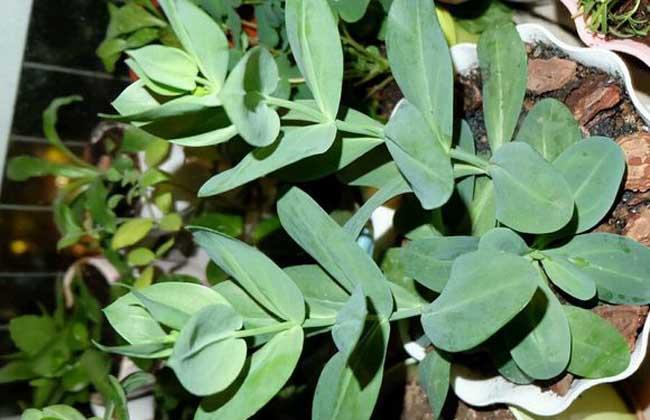
苗土整理
洋桔梗种子播种前先准备好育苗土或者是育苗块,为了方便些可以尽量用单独的育苗小盆种,这样可以避免发芽时间不一样而发生的徒长现象。然后装好土后用喷壶喷一下,下面再坐在大些的水盆里,这样就可以让土整个全部湿透。

播种方法
洋桔梗的种子特别细小,像灰尘一样,哪怕喘个大气儿都好像要被吹飞,所以一定要小心,最好是有东西在下面接着,铺一层白纸,这样即使是不小心掉了,也不怕找不到它。然后有牙签稍粘点水,在种子上点一下,就粘到牙签上了,再往育苗盆里种就方便多了。需要注意的是洋桔梗的种子是不需要在上面盖土的,就直接放在土的表面就可以了。
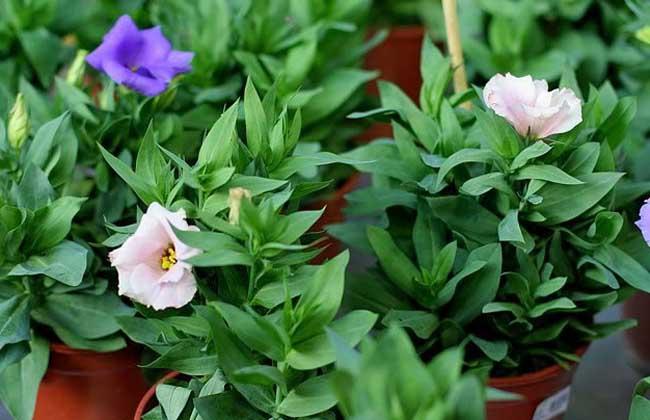
播后保湿
洋桔梗的种子放好后上面如果有盖子可以盖上保湿,如果没有盖子的,可以盖一层家里用的保鲜膜,这样可以保持湿度,每天打开透透气就可以了。也可以每天拿特别细小的喷壶喷喷水,如果觉得掌握不好,可以直接坐在水盆里保持湿度。但一定记得,不要24小时放在里面,只要每天轻轻喷喷或者坐一会儿就可以了。种子也需要呼吸的,泡久了种子会泡坏,反而不容易发芽。

发芽管理
洋桔梗种子播后一般15~20天左右就会发芽了,晚一些的也有30天发的。一定要有耐心,不要放弃它们,在没发芽之前一直要保持湿度。发芽以后就不用盖盖子了,可以晒散光,但千万不要暴晒,因为刚发芽的小苗很脆弱的,一晒很容易就干吧死。这时也不用天天放在水盆里了,看稍干点了再放就可以,刚出芽的尽量轻轻喷,因为小苗很小,一用力喷就会倒的。
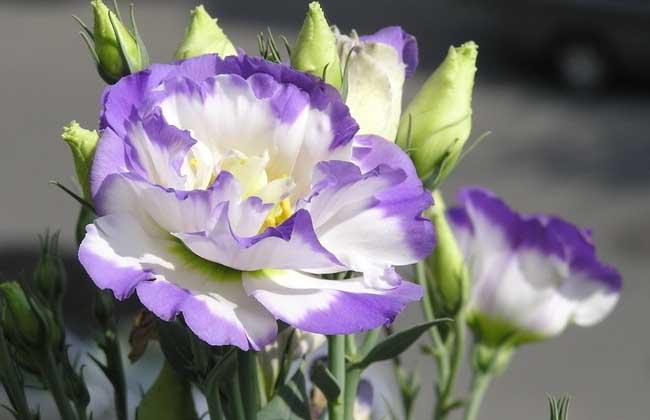
种植管理
1、光照:洋桔梗花对光照的反应比较敏感,长日照对洋桔梗的生长发育均十分有利,有助于茎叶生长和花芽形成,达到提早开花的目的,一般以每天16小时光照效果最好。
2、温度:洋桔梗喜温暖,生长适温为15~28℃,生长期夜间温度不低于12℃。冬季温度在5℃以下,叶丛呈莲座状,不能开花。也能短期耐0℃低温。生长期温度超过30℃,花期明显缩短。
3、浇水:洋桔梗喜欢湿润环境,但过量的水分对洋桔梗根部生长不利,易受病害侵入。花蕾形成后要避免高温高湿环境,否则容易引起真菌性病害。同时,生长期供水不足,茎叶生长细弱,并提早开花。
1
7
文章
权问薇
2017年07月15日


骨头泡水浇花
平常家里,吃完的鸡爪、鱼骨头、排骨…千万别丢。因为这些骨头里都含有丰富的钾肥,拿来养栀子、茉莉、米兰等这些开花的植物,花开得特别旺,拦都拦不住!

1、清洗盐分
家里吃完的各类骨头,用清水清洗干净之后,再浸泡2-3个小时,把里面的盐分都析出来,然后直接捞出来。

2、加水沤制
把捞出来的骨头,放在塑料瓶或桶中,加水大概到3/5-4/5之间,然后盖上盖子,稍微留一点空隙,之后放在太阳底下暴晒。为了防止夏天有臭味,可以在里面加入EM菌或橘子皮,为了防止招虫,可以喷一点杀虫剂。

3、腐熟之后使用
等到发现塑料瓶里的水变成黑褐色之后,就是已经沤制成功,可以使用了。用骨头肥按照1:20的比例兑水浇花,在开花之前大概每周浇一次,保证花开到爆!
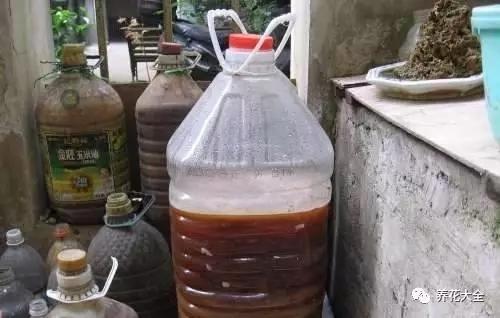
海鲜壳沤肥
因为花花在青岛,所以海鲜吃的比较多,平常吃完的虾壳、蟹壳等都是好花肥,但是海鲜壳能做花肥的前提,是海鲜必须是清蒸或水煮的,油焖和红烧的就别考虑了。

1、收集
在吃海鲜的时候,将那些比较软的部分留下来,比如蟹鳃、虾头等,那些比较硬的就不用了。
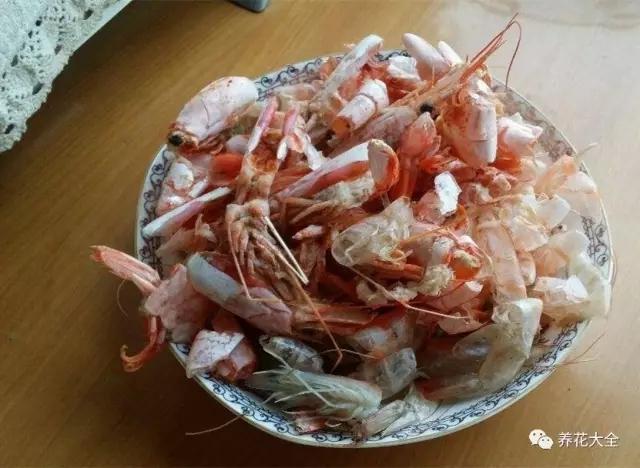
2、加土沤制
找一个空花盆,在花盆底部埋一层5cm左右的土,再放入收集下来的虾头等海鲜壳,之后再覆盖一层6-10cm左右的土。

3、防虫
把埋好海鲜壳的花盆,放在光照良好又通风的地方养护,如果担心夏天招虫子,可以在埋入海鲜壳的时候,喷一点杀虫剂,再埋土。

4、沤制使用
虾头、蟹鰓等比较软的壳,很快就能腐熟没了。隔一个月左右,就可以将土壤搅拌之后,直接拿来种花用了。

鱼肠做营养土
我们买回家的鱼,挖出来的鱼肠也是养花的好肥料,因为它含有较高的磷钾肥,用它来养月季,月季的花开得又大又艳!

1、准备工作
准备一个泡沫箱,在泡沫箱的底部铺一层5-7cm的园土,园土的肥力差点没关系,也可以用之前换盆替换下来的旧土。

2、放鱼肠
把底部的土铺完了之后,就将鱼肠放进去薄薄的一层,大概2-3cm就够了,别放太多。

3、加入橘子皮
为了防止臭味,可以切一些橘子皮切碎了之后,均匀地撒在鱼肠上。如果家里有杀虫剂,也可以喷一点。

4、覆土
放好了鱼肠和橘子皮之后,再继续覆土,大概再盖7-10cm就行了。

5、密封处理
盖好了土之后,浇一次透水,将泡沫箱盖上盖子,放在阳台上,期间可以打开盖子搅拌一下,大概3-4个月就能完全腐熟了。用腐熟好的土养月季,不仅让月季花大色艳,而且2年都不用施肥了。

啤酒做花肥
一般花友家里都有啤酒,如果发现家里的啤酒过期了,千万别丢掉,它里面含有不少蛋白质、氨基酸等物质,是养花的好材料!

1、啤酒擦拭叶片
把啤酒和清水按照1:10的比例配制好了之后,用柔软的抹布蘸取溶液,擦拭君子兰、绿萝、龟背竹等植物的叶片,可以正反面都擦拭,让叶片充分吸收啤酒里的营养,从而变得油亮有光泽。

2、防治病虫害
把阿司匹林放在啤酒中溶解,再加入10倍的水,摇晃均匀之后喷洒叶片,能够防治病虫害。

3、啤酒浇花
把啤酒和水按照1:50的比例混合之后,直接浇到花盆中,能够让花长得更旺!
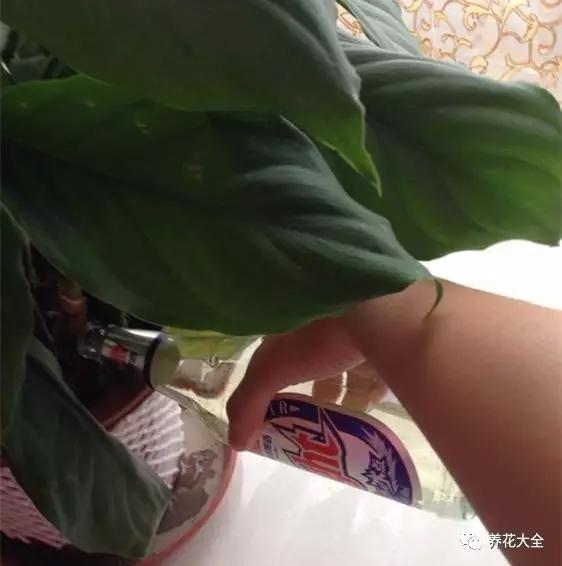
0
1
文章
Dummer. ゛☀
2017年07月14日

Family - Euphorbiaceae
Stems - Herbaceous, erect, single from the base, from a taproot, branching in apical 1/2, stellate pubescent, to +/-30cm tall.
Leaves - Alternate, petiolate, stipulate. Stipules green, needlelike, fugacious, to 1.3mm long, possibly tipped by a small gland. Petioles stellate pubescent, with a shallow adaxial groove, to 2cm long. Blades to 5cm long, 2.5cm broad, lanceolate to lance-ovate, stellate pubescent (much more so abaxially), dull green adaxially, light green abaxially, serrate, blunt at the apex.
blade.
Inflorescence - Terminal, compact, androgynous racemes to 1.5cm tall(long). Peduncle densely stellate pubescent. Satminate flowers - Pedicel stellate pubescent, 1.2mm long, each flower subtended by a small needlelike bract. Bracts to 1mm long. Numerous glands present at the base of each pedicel. Pistillate flowers - Pedicel to .1 or .2mm long.
Flowers - Staminate flowers - Petals 5, all white, stellate pubescent, slightly exceeding the sepals, oblong-lanceolate. Stamens 10. Filaments white, glabrous, to 1.5mm long. Anthers pale yellow, .4mm broad. Sepals 5, ovate, to 1.2mm long, white, stellate pubescent. Pistillate flowers - Sepals 5, greenish, stellate pubescent externally (branches of the pubescence long and thin), glabrous internally, +/-2mm long in flower, accrescent, oblanceolate to spatulate. Ovary stellate pubescent, green, superior, 1mm long in flower, 3-locular (one seed per locule). Placentation axile. Styles 3, divided nearly to the base and appearing as 6, white, papillate, 2.2mm long.
Flowering - July - October.
Habitat - Prairies, open woods, waste ground, pastures, glades, roadsides, railroads.
Origin - Native to U.S.
Other info. - This species is found throughout most of Missouri but seems to be absent from the north-central portion of the state. This species is easy to ID because of its toothed leaves. No other wild species of Croton in Missouri has toothed leaves. The species epithet comes from the fact that the leaves typically have two glands at the base of each leaf blade.
Stems - Herbaceous, erect, single from the base, from a taproot, branching in apical 1/2, stellate pubescent, to +/-30cm tall.
Leaves - Alternate, petiolate, stipulate. Stipules green, needlelike, fugacious, to 1.3mm long, possibly tipped by a small gland. Petioles stellate pubescent, with a shallow adaxial groove, to 2cm long. Blades to 5cm long, 2.5cm broad, lanceolate to lance-ovate, stellate pubescent (much more so abaxially), dull green adaxially, light green abaxially, serrate, blunt at the apex.

blade.
Inflorescence - Terminal, compact, androgynous racemes to 1.5cm tall(long). Peduncle densely stellate pubescent. Satminate flowers - Pedicel stellate pubescent, 1.2mm long, each flower subtended by a small needlelike bract. Bracts to 1mm long. Numerous glands present at the base of each pedicel. Pistillate flowers - Pedicel to .1 or .2mm long.

Flowers - Staminate flowers - Petals 5, all white, stellate pubescent, slightly exceeding the sepals, oblong-lanceolate. Stamens 10. Filaments white, glabrous, to 1.5mm long. Anthers pale yellow, .4mm broad. Sepals 5, ovate, to 1.2mm long, white, stellate pubescent. Pistillate flowers - Sepals 5, greenish, stellate pubescent externally (branches of the pubescence long and thin), glabrous internally, +/-2mm long in flower, accrescent, oblanceolate to spatulate. Ovary stellate pubescent, green, superior, 1mm long in flower, 3-locular (one seed per locule). Placentation axile. Styles 3, divided nearly to the base and appearing as 6, white, papillate, 2.2mm long.

Flowering - July - October.
Habitat - Prairies, open woods, waste ground, pastures, glades, roadsides, railroads.
Origin - Native to U.S.
Other info. - This species is found throughout most of Missouri but seems to be absent from the north-central portion of the state. This species is easy to ID because of its toothed leaves. No other wild species of Croton in Missouri has toothed leaves. The species epithet comes from the fact that the leaves typically have two glands at the base of each leaf blade.
0
0









